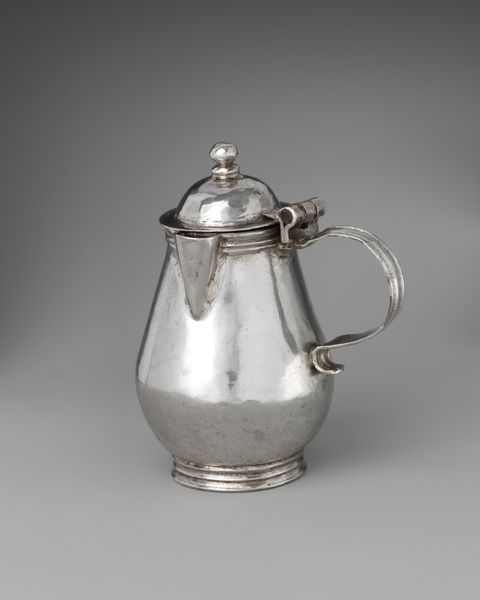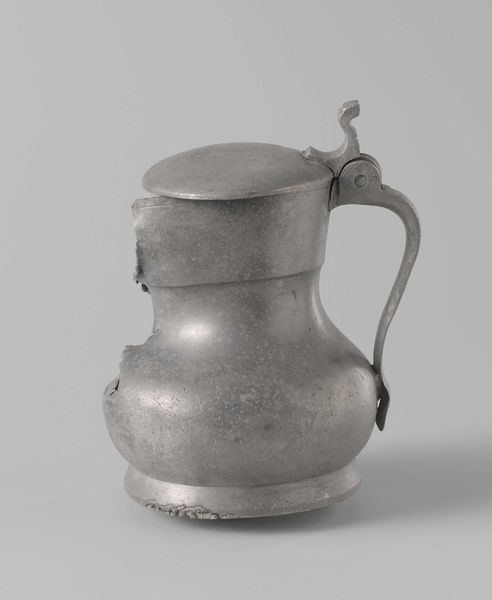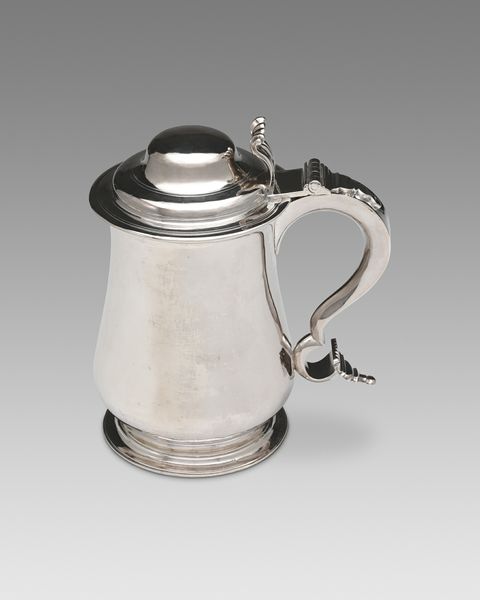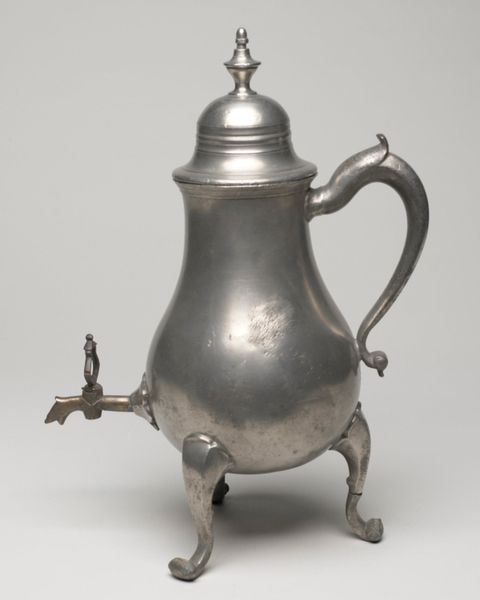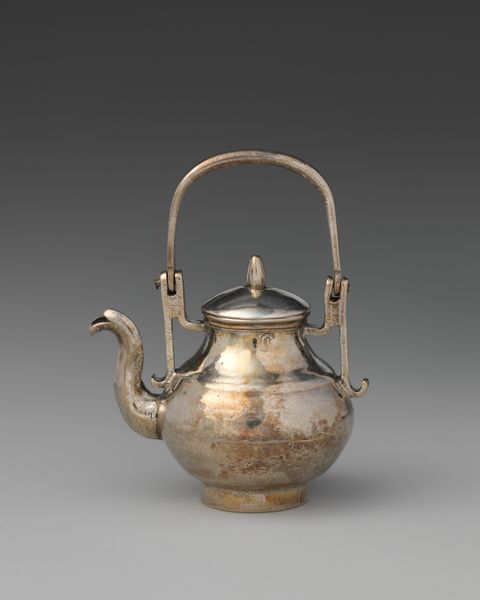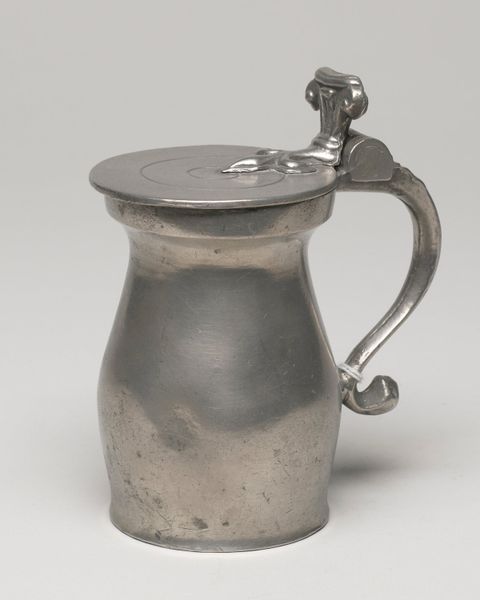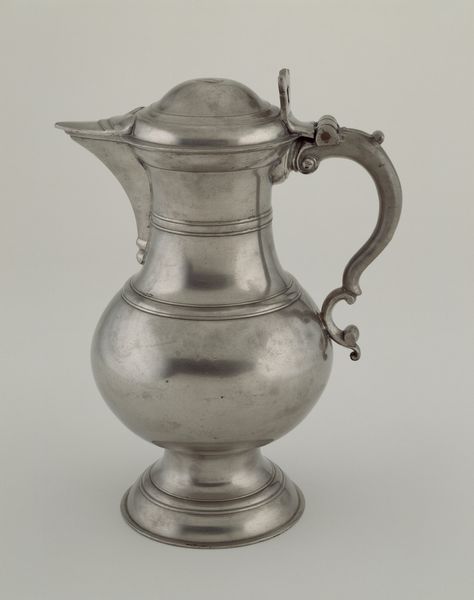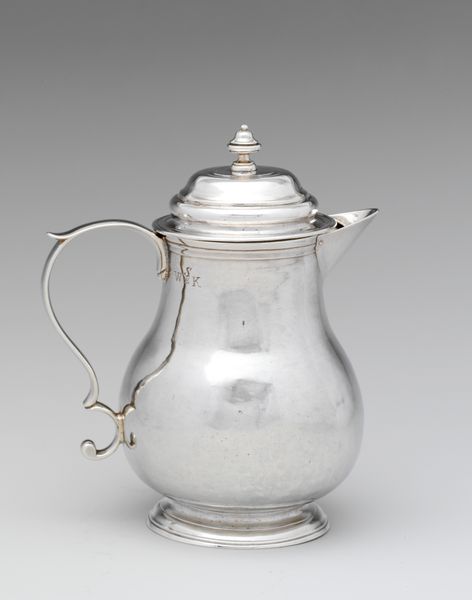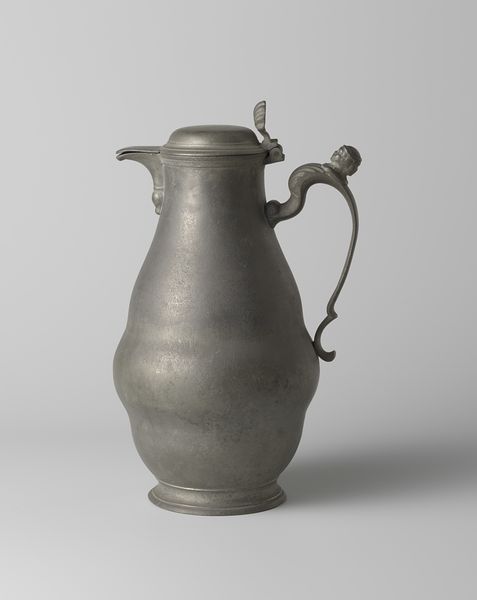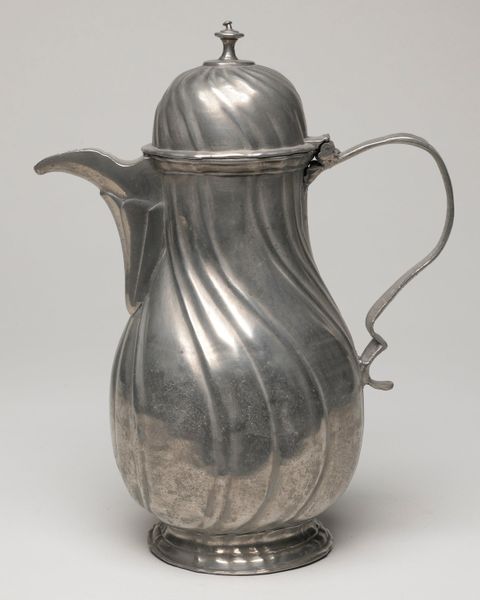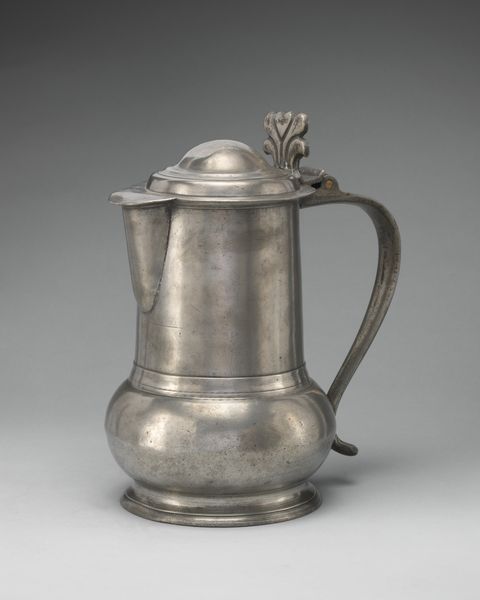
silver, metal, wood
#
silver
#
baroque
#
metal
#
united-states
#
wood
#
decorative-art
Dimensions: Overall: 10 1/8 x 10 5/8 in. (25.7 x 27 cm); 47 oz. 13 dwt. (1481.7 g) Base: Diam. 7 3/8 in. (18.7 cm) Body: H. 7 7/16 in. (18.9 cm)
Copyright: Public Domain
This silver teakettle was crafted by Cornelius Kierstede, a New York silversmith active in the late 17th and early 18th centuries. The kettle reflects the economic and social structures of colonial America, where precious metals symbolized wealth and status, and objects like this were commissioned by affluent families. Consider how gender, race, and class dynamics intersect here. Silver, often mined using enslaved labor, was transformed by skilled artisans like Kierstede – part of a growing merchant class – into objects of refined domesticity for wealthy white households. The tea itself, central to social rituals, was also a product of colonial trade networks and, all too often, exploited labor. This teakettle is not merely a functional object, but a symbol of the complex social hierarchies that defined early American life. Its gleaming surface belies the intricate web of power, privilege, and labor that underpins its creation and use.
Comments
No comments
Be the first to comment and join the conversation on the ultimate creative platform.
